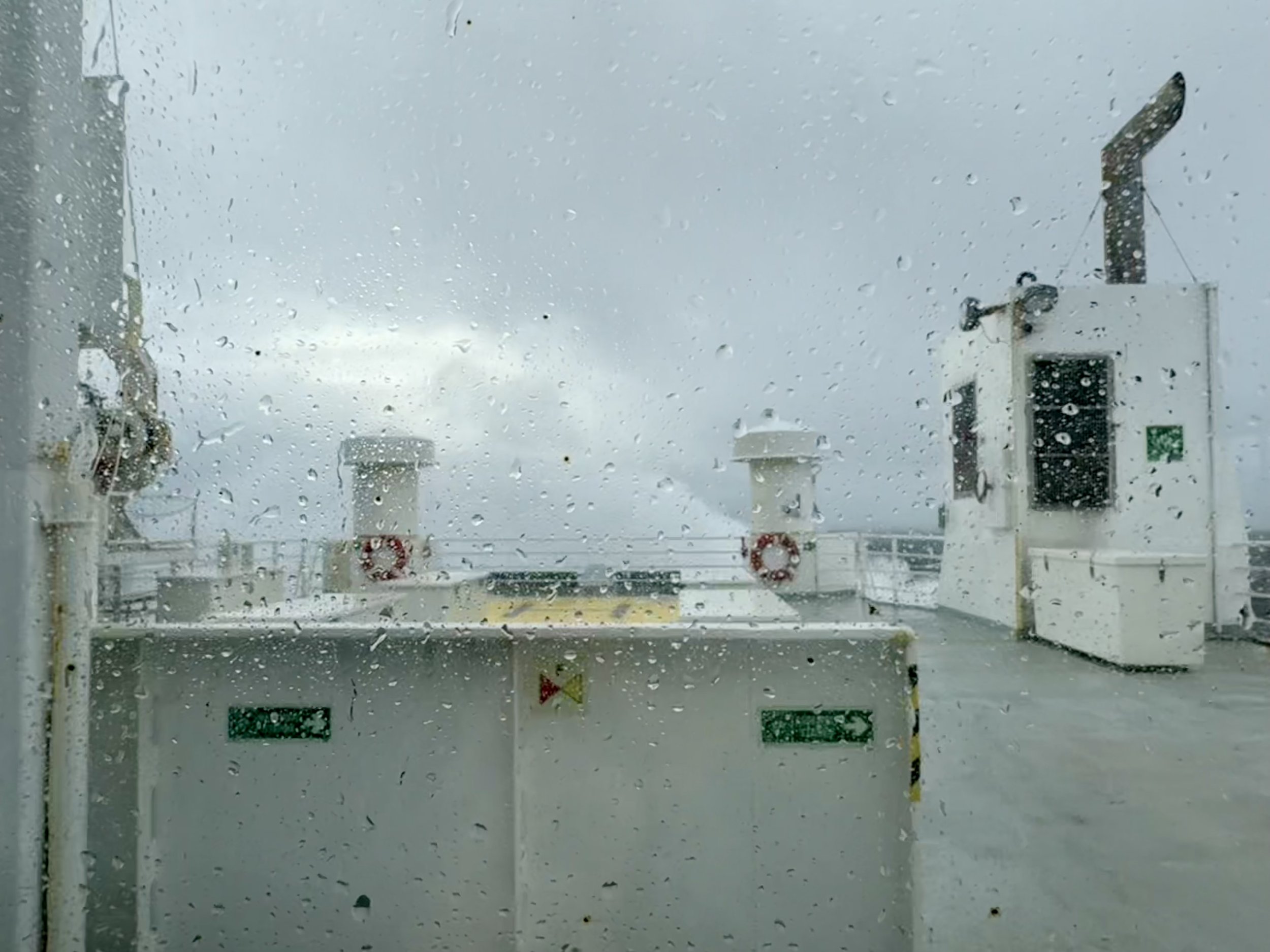A day filled with bad weather and problems - which was about to end in disaster
I woke up early because it was storming and pouring rain outside the mobile home. The winds tore at the car and the rain pattered loudly on the roof. After glancing at the weather forecast, I realized that it would only get worse in the coming days, especially around Lofoten. With two previous trips there and the knowledge that I will surely return several times, I decided to skip Lofoten for this trip and instead aim for the Helgeland coast. It's an area I haven't explored much before and I'm hoping for better weather there.
As I considered my options for leaving Lofoten, it quickly became clear that I needed to choose the ferry route carefully. The ferry from Svolvaer to Skutvik had stopped running at the end of August so I could forget about it. The second one, from Moskenes to Bodø, had all pre-bookable places fully booked and given the weather, I still didn't fancy the roughly three-hour crossing. In the end I decided to take the ferry from Lødingen to Bognes, the same route I took home last winter. There was a strong wind during the crossing and the ferry rocked so violently that the waves crashed over the deck several times. I was glad I skipped the three hours to Bodö because this hour was more than enough.
When I got off the ferry and continued south, I turned on the heat in the camper - but then my Truma heater suddenly wouldn't work. The error code "E551" flashed angrily on the display. I dug out all the manuals I had and started googling but there was hardly any information on what the problem could be. Finally I found a post in a Hymer group where a number of Germans mentioned the same error code and that they all had to replace the circuit board on their heaters. To be honest – the thought of a motor home without heat in a cold and stormy Norway was not encouraging at all. The chance of getting a new circuit board here in that case seemed rather hopeless.
I called Gabriel at the Hymer Center in Örebro where I bought the car and he advised me to try removing the fuse and de-energizing the system and then restarting it. I followed Gabriel's advice and restarted the heater. The first time it didn't work. The second time I made a longer attempt and to my great relief I was able to clear the error code. The heater started up again but I have no idea what the root problem was - I just hope it doesn't come back.
As I drove on, the weather got even worse, which I hardly thought was possible. The rain poured down and the gales tore at the motor home. Driving along the E6 which is filled with old tunnels and heavy traffic in pouring rain was a challenge in itself. The older tunnels are narrow, dark and irregular with large boulders protruding from the walls. In the middle of one of these tunnels, barely lit, I was suddenly met by a truck wedged into the roof of the tunnel. With cars behind me, there was no way to reverse. I carefully crept past but in the middle of the truck it suddenly became even narrower where a boulder jutted out. That's where it got stuck. I realized I had no choice but to sacrifice my right rear view mirror. It had to bend and was slightly scratched but then I heard a loud, angry and heartbreaking crashing sound from the roof of the motor home followed by a sharp bang. The roof of the old tunnels is quite narrow and my car is quite high, so I understood immediately that this was not going to be good.
I drove on until I could stop and inspect the devastation. Heart pounding, I got out of the car expecting the worst. Luckily, apart from a scratched rear view mirror cover, I had only lost a plastic cover from the awning and had some cosmetic damage to the awning cassette. If I had been just five centimeters closer, the entire awning and probably parts of the roof and side of the car would have been ripped off. I was really lucky though! I've driven many thousands of km in Norway on lots of occasions and on narrow, crooked, tight and generally noisy roads but never had an accident but now was the time.
I continued towards Saltstraumen where I pulled into a campsite near the streams. The campsite was fresh and tidy, although the view was lacking, and I even got my own little veranda. After all the chaos it felt good to stretch my legs and when it temporarily stopped raining I took the opportunity to take a walk to the bridge to look at the famous streams.
“Saltstraumen” is the world's strongest tidal current, where huge amounts of water rush through a narrow strait between the fjords when the tide turns. The current can reach speeds of up to 20 knots creating eddies and eddies that are impressive to watch from the bridge. It is a fascinating sight – the sea almost boils from the force of the rushing waters.
Of course it started raining again as soon as I got on the bridge and I returned drenched in rain to the camper. But at least I got to see the mighty currents for a while.
Tomorrow I continue along the Helgeland coast. I hope for better weather - and that both the motorhome and I don't break down.






